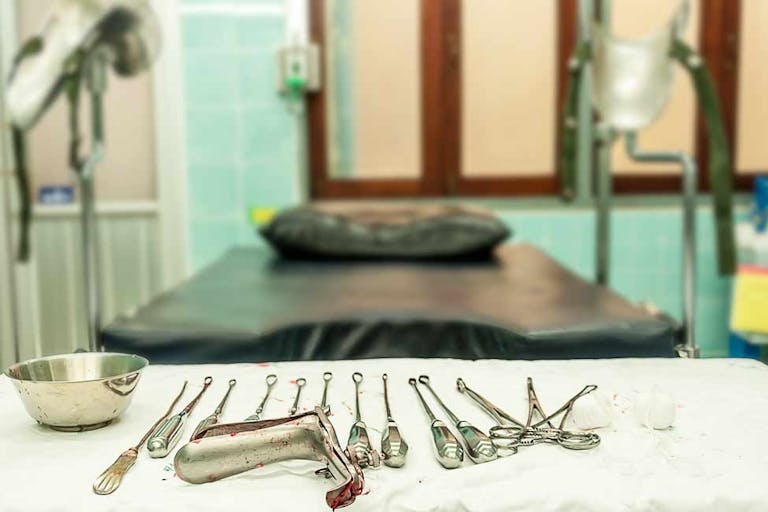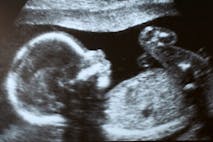
Number of 'independent abortion clinics' continues to drop
Dave Andrusko
·
Pro-abortion reporter views abortion, feels ‘discomfort I hadn’t expected’
Former abortion facility owner and director Norma Goldberger wrote about watching an abortion for the first time in her memoir, saying, “I watched my first abortion that visit, and I’m embarrassed to admit I almost passed out. It was the first and last time I was ever queasy in an abortion. I wondered if it was from having eaten a good lunch and/or having milk laden breasts. Over my working career I have held women’s hands during thousands of abortions and never again felt faint.”
Goldberger does not say when in pregnancy the abortion she watched took place. But former abortionist Anthony Levatino illustrates abortion procedures in the first, second, and third trimesters. Watching the videos, it is easy to see why Goldberger could be so effected; they are violent, jarring procedures.
In a first trimester procedure, the abortionist dilates the cervix, then uses a suction machine attached to a tube to pull apart the developing baby and remove him or her in pieces. The parts of the baby are then examined to make sure the abortion is complete:

READ: Reporter describes pile of small limbs from aborted babies
Journalist Sarah Kliff — known for initially dismissing the case of abortionist Kermit Gosnell as a “local crime story” — also watched an abortion, in this case done by the infamous Leroy Carhart. Although Carhart specializes in late-term procedures, the abortion Kliff saw was a first trimester one. Kliff writes:
Carhart used a suction tube to empty the contents of the uterus; it took no longer than three minutes. The suction machine made a slight rumbling sound, a pinkish fluid flowed through the tube, and, faster than I’d expected, it was over. … I’d anticipated some kind of difficulty watching an abortion; it wasn’t there.
At least not physically. But there was a discomfort I hadn’t expected, my emotional reaction to watching abortions… I had (and still have) difficulty understanding my own reaction, both relieved to have watched a minimally invasive surgery and distressed by the emotionality of the process.
Kliff did not look at the aborted baby’s remains. Had she done so, she would have seen something that would likely have given her more of an “emotional reaction.” Abortionist Willie Parker wrote about examining the aborted baby after a first trimester procedure:
I place the small mass of tissue and blood into a fine mesh strainer that looks like something you’d find in an industrial kitchen, and I run the whole thing for a minute under running water. Then I transfer the contents of the strainer into a square Plexiglas dish, which I place on top of a lightbox. And there, I inspect what has just come out of the woman’s body: what I’m looking for is the fetal sac, which, at a later gestational age, becomes the placenta, and, after nine weeks, every one of the fetal parts – head, body, limbs – like a puzzle that has to be put back together…
Article continues below
Dear Reader,
In 2026, Live Action is heading straight where the battle is fiercest: college campuses.
We have a bold initiative to establish 100 Live Action campus chapters within the next year, and your partnership will make it a success!
Your support today will help train and equip young leaders, bring Live Action’s educational content into academic environments, host on-campus events and debates, and empower students to challenge the pro-abortion status quo with truth and compassion.
Invest in pro-life grassroots outreach and cultural formation with your DOUBLED year-end gift!
I make sure I find every part, and I place them together, re-creating the fetus in the pan.
An article in the Journal of the American Board of Family Medicine, which instructs doctors how to commit abortions, says:
After the procedure, the aspirate should be rinsed through a sieve with cold water and suspended in a wide glass dish to facilitate inspection. The gestational sac should be identified, and after 9 weeks fetal parts may also be seen (limbs, calvarium, and spine). A backlight underneath the dish helps. After 10 weeks gestation, all fetal parts should be identified.
So Kliff did not see what the suction aspiration did to the aborted baby. Therefore, she did not really confront the true reality of abortion.
READ: When two reporters decided to watch a D&E dismemberment abortion, this is what they saw
Later in the article, Kliff writes about how her pro-abortion friends and colleagues reacted to her witnessing the procedure:
When I returned from Omaha, friends and colleagues wanted to know if I had “done it.” When I said I had, their reactions surprised me. Friends who supported legal abortion bristled slightly when I told them where I’d been and what I’d watched. Acquaintances at a party looked a bit regretful to have asked about my most recent assignment. … my experience (among an admittedly small, largely pro-choice sample set) found a general discomfort when confronted with abortion as a physical reality, not a political idea.
It is not surprising that Kliff and her fellow advocates do not want to confront the reality of abortion. It is easier to maintain a supportive stance if you don’t think about the details of what it does to preborn children. The “physical reality” of abortion is gruesome and horrific, with tiny babies being violently torn apart. It is much easier to be pro-abortion if you never think about what supporting it really means.
Norma Goldberger Abortion Confidential: Secrets of an Abortion Clinic Owner (CreateSpace , November 23, 2014) Kindle Edition
Willie Parker Life’s Work: From the Trenches, A Moral Argument for Choice(New York: 37INK, Atria, 2017) 95 – 96
Live Action News is pro-life news and commentary from a pro-life perspective.
Contact editor@liveaction.org for questions, corrections, or if you are seeking permission to reprint any Live Action News content.
Guest Articles: To submit a guest article to Live Action News, email editor@liveaction.org with an attached Word document of 800-1000 words. Please also attach any photos relevant to your submission if applicable. If your submission is accepted for publication, you will be notified within three weeks. Guest articles are not compensated (see our Open License Agreement). Thank you for your interest in Live Action News!

Dave Andrusko
·
Analysis
Angeline Tan
·
Analysis
Cassy Cooke
·
Politics
Madison Evans
·
Opinion
Nancy Flanders
·
Investigative
Carole Novielli
·
Guest Column
Sarah Terzo
·
Abortion Pill
Sarah Terzo
·
Guest Column
Sarah Terzo
·
Guest Column
Sarah Terzo
·
Guest Column
Sarah Terzo
·